Add to Upcoming AmazonFresh Delivery
• Concepts explain how software works.
• These concepts help build and explain a complex system.
• For example, Twitter would be pretty hard to explain without mentioning ‘hashtags’ or ‘following’. These are concepts.
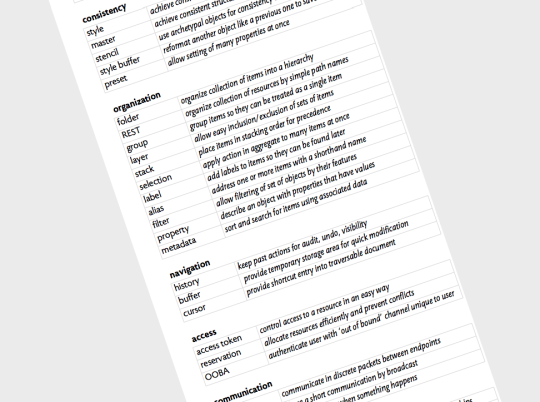
A list of concepts and purposes. By Daniel Jackson
• Let’s look at online shopping carts. Carts have existed about as long as internet businesses have been around. Since the mid 90′s.
• The concept of a cart is quite simple, and maps closely to it’s real-life counterpart.
• You can explain concepts with an operational principle. “If you add an item to cart, it is moved to a special list. You can then review, edit, remove, add items to this list before deciding to order them.
Introducing Amazon Fresh
• When Amazon introduced AmazonFresh, a grocery delivery service, they had to think of a way for it to play nicely with the existing shopping cart.
• With AmazonFresh, you are actually adding to an ‘order’. Because you are ordering perishable foods, it’s important for the food to be delivered (attended or unattended) within a time window. These differences mean that you can’t mix up the fresh food and the books.
• Here’s how Amazon explains it. Fresh items are added to the Fresh cart, separate from other Amazon.com items. If you have items in your Amazon shopping cart and Fresh shopping cart, you’ll see the option to Checkout Fresh Cart or Proceed to Checkout, respectively. This will create two separate orders for your deliveries and as a result you will need to checkout each cart separately.
• Amazon uses a few different techniques to enforce this seperation.
• Different colored buttons

• Visually separate carts
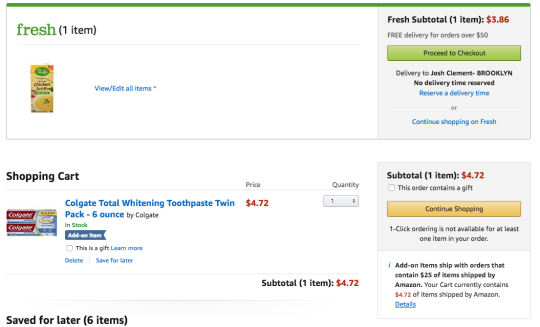
• But in some cases, Amazon displays a combined cart, like here in their top nav. I’ve added 1 item to shopping cart, and 1 item to fresh cart, and the number 2 is displayed. At this low level of detail, it doesn’t make sense to clutter the bar with multiple carts.
![]()
• Some items, like hand soap, are able to be added to both carts. Amazon uses a logo next to the price to communicate the different store.
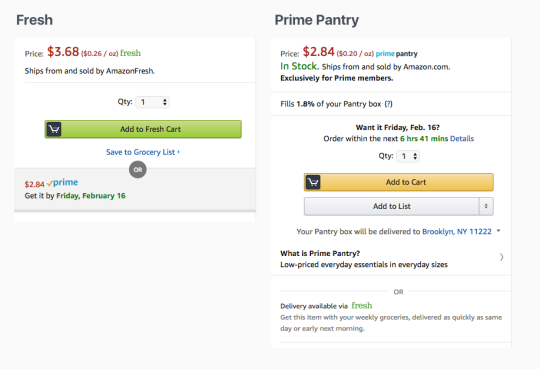
Post-Order
• You add your items to the fresh cart. You place your fresh order. Amazon receives your order. It’s schedule for tomorrow evening, between 8pm and 10pm. Great.
• But what if I schedule an order, but want to add something else?
• You’re in luck.You can add items to an upcoming AmazonFresh order if it hasn’t already been prepared.
But how do you design for this?
The challenge is in two parts.
- Communicate that it’s possible to add to an upcoming order.
- Design functionality that make it possible to add to an upcoming order.
For the communication piece. Amazon uses a number of tactics. Push notifications, status bars with countdowns etc. Home page, the cart, your phone, they make sure you know.

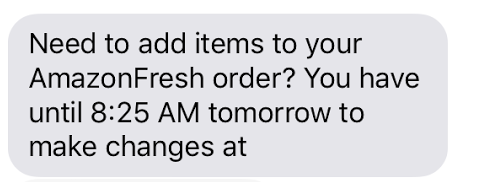
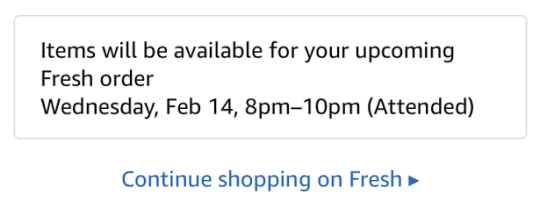
—
For the functional piece, Amazon relies on the ‘fresh order’ concept to help guide users along.
This is how they explain the process.
To add new items to an upcoming AmazonFresh order:
- Go to the AmazonFresh store and add items to the Fresh cart
- Once you are done, select Add to Fresh Order


So with this flow, your ‘order’ becomes like another cart. During the ‘time-window’ you’re able to add things to it, review it, and confirm you’d like to pay for it.
After you update your order, you see this message.
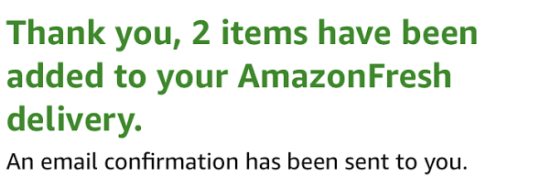

And, since I’m still within the ‘time window’, I’m able to review, edit or add more items to the order.
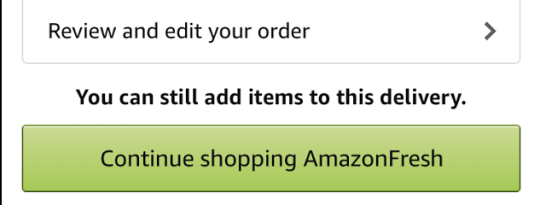
The concept is enforced in other ways including (visual design, language - “Add to your order”, “Done with order changes”, and other additional data like the countdown timer). Consistency is really important.
Use concepts as your ‘unit of design’, as a way to introduce complex functionality to your product.